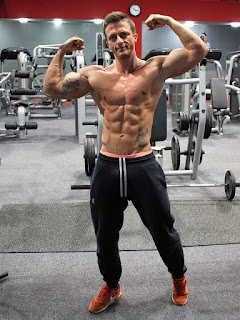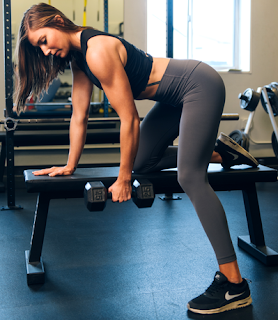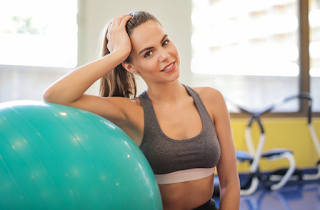Maintaining a good level of fitness is something we should all expect. But determining what confirms decency can be difficult. Here we answer the question: What does fitness body?
According to the US Department of Health and Human Services, physical well-being is defined as “a set of rights or rights a person has in relation to his ability to perform physical activity.”
This description exceeds the ability to run fast or lift heavy weights. Despite its importance, these features only cover the areas of fitness. This article provides details on the five main elements of fitness.
Fitness information quickly:
Some diseases can be prevented by maintaining physical fitness.
Through exercise, body composition can change without changing weight.
The hearts of athletes appear different types depending on the sport they choose.
Inflammation and nerve changes in the fibers increase the strength of the muscles.
Stretching can relieve many complaints of treatment to increase flexibility.
Health depends on how the person fills each health component.
When it comes to fitness, it includes ingredients
Respiratory cardiac fitness
Muscle strength
Muscular endurance
Body composition
Flexibility.
So, you can tell if a person is physically fit by determining how much performance they do on each component.
We will see them all in privacy.
Breathing performance
Respiratory tolerance refers to the amount of fuel that the body can provide during blood activity through the circulatory and respiratory system. Activities that help improve heart tolerance to breathing are the cause of chronic heart rate.
These activities include:
Swimming
Walk quickly
Running
Ride a bike
People who regularly participate in these activities are more likely to get cardio and respiratory fitness. It is important for these activities to start slowly and gradually increase their intensity.
Exercise increases your heart’s stamina in many ways. The heart muscle is strengthened so that it is able to pump more blood into each heartbeat.
At the same time, additional small arteries are implanted into the muscle tissue to provide blood to the blood vessels more effectively as needed.
How does heart health change with exercise?
After continuous training, the heart changes and improves its effectiveness. However, more recent studies have shown that different types of activities differ efficiently.
All types of exercise increase the overall size of the heart, but there are significant differences between endurance athletes such as rowing and strong athletes such as soccer players. Patient math shows the heart that extends to the left and right ventricles, while strong athletes show the thickness of the heart wall, especially the left ventricle.
How does lung health change with practice?
The respiratory system does not adapt to the same degree, although the heart is constantly strong over time. Lung function is not fundamentally changed, but the oxygen-carrying lungs are used more effectively.
In general, exercise encourages the body to become more efficient in receiving, distributing and using oxygen. Over time, these improvements continue and increase overall health.
The American College of Sports Medicine recommends 30-60 minutes 3-5 times a week, while maintaining a maximum heart rate of 65-85 percent.
Health benefits of the heart and respiratory system
It helps reduce the risks of incorporating heart fitness and breathing conditions:
Expect deep lines of science every day to get our best stories. Click and satisfy your curiosity.
The US Department of Health and Human Services defines muscle strength as “the ability to exercise muscles during activity.”
There are several ways to measure muscle strength. In general, the best way is to compare results with a specific population group to raise or pay a certain weight in a particular situation.
In general, if the muscles are continuous and working regularly, their strength will increase. There are different ways for your muscles to do strenuous activity, but anything that keeps muscle fatigue will increase muscle strength over time.
How does muscle structure change with practice?
Muscles are made up of long muscle cells. Each muscle cell contains a contracting protein – actin and myosin – which gives muscles their strength. These fibers shrink together, resulting in a so-called energy strike. The total force depends on the number of these contracted units in perfect harmony.
To build muscle, the following criteria must be met:
Exercise regularly
Individuals consumed sufficient protein
The exact mechanisms of muscle formation are not fully understood, but the general principles are well known. As a result of the exercise, the muscle cells expand and increase the production of actin and myosin.
Also, in untrained muscles, the fibers are constantly released – in other words, they are not thrown in perfect harmony. When they become coaches, they learn to shoot together as a unit, which increases maximum power output
In general, the body protects the muscles from sex and excessive injury. When the muscles are trained, the body begins to disable muscle stimulation – giving more energy.
Resilience
Fitness may include muscular endurance, which is the ability of muscles to continue to exercise strength. As mentioned above, strength training builds great muscles. On the other hand, endurance training does not necessarily lead to building large muscles.
This is because the body focuses more on the cardiovascular system, ensuring that the muscles receive the oxygen-rich blood you need to maintain their function. Another important muscle change that has been specifically trained in endurance is related to different types of muscle tissue – fast twitch and slow twitch fibers:
Quick Twitch Fiber – Compresses quickly but gets tired quickly. They use excessive force and benefit the enemy. They are white because they do not require blood to function.
Soft slow fibers – best for durability, they can work without getting tired. It is found in the heart muscle. These fibers appear red, depending on the blood supply rich in oxygen and myoglobin stores.
Various exercises will speed up jitter fibers, slow jitter fibers, or both. The counters will have smooth fibers relatively quickly, while long-distance runners will have slower fibers.
Body composition
Anatomy measures the relative amount of muscle, bone, water, and fat.
A person can maintain the same weight but can radically change the ratio of each component of the body.
For example, people with high muscle mass (fat mass) are overweight and people with muscles less than the same length and waist circumference. Fat increases weight.
These measurements of body fat content were taken from high-level athletes and women from various disciplines:
Basketball – males 9%, females 13%
Cross Country Skiing – Male 5%, Female 11%
Golf – male 13%, female 16%
Rowing / Rowing – male 13%, female 22%
Swimming – 12% male and female 19%
Competitors 100, 200 and 400 meters – male 6.5% and female 14%
Boxing – men 7 percent
Wrestling – men 8 percent
How is anatomy calculated?
Correct body organization can be a daunting task. There are many exact methods, and here is just one:
First, weights are measured on standard scales. Next, the quantity is measured by immersing the person in water and measuring displacement.
The levels of water, protein and minerals in the body can be tested with many chemical and x-ray tests. The concentration or concentration of water, fat, protein and minerals is measured.
The numbers are entered in the following formulas:
1 / dB = w / d v + f / df + p / dp + m / dm
Where: DB = total body density, W = water ratio, F = fat percentage, P = protein ratio, M = mineral content, DW = water density, DF = fat density, DP = protein concentration, DM = mineral density
Other methods include bi-energy X-ray absorption measurements, volumetric displacement imaging, biomagnetic impedance analysis, total body imaging (MRI and tomography) and ultrasound.
Flexibility
Flexibility is the range of motion across the joint. Flexibility is important because it simultaneously improves the ability to smooth movement and can help prevent injuries. Flexibility is specific to each joint and depends on different types, including ligaments and narrow tendons.
Flexibility is enhanced by a variety of activities, all designed to extend joints, ligaments and tendons. In general, there are three types of exercises to increase flexibility:
Dynamic expansion – the ability to meet the full range of motion of a specific joint. This national flexibility is used in standard “warm-up” exercises because it helps prepare the body for physical activity.
Active Steady Stretch – keeps the body or part of it in a long position and keeps it for some time. An example of a constant active flow is the difference.
Ballistic Stretch – It is used when the body is already warm and is beautified by exercise, including stretching and repetition in different positions.
There are several ways to improve flexibility. The daily stretching system can be one of the easiest and most effective way to achieve the flexibility of the entire body.



Leave a Reply